2021/04/07
Advantages And Drawbacks Of Three Types Of Actuator Systems: Pneumatic, Hydraulic, And Electric
News and Articles
Introduction
The need for actuators has grown exponentially. Nearly everywhere you look, you can see one of the three types of actuator motion systems at work in an endless variety of applications. There are many misconceptions involving pneumatic, hydraulic, and electric actuators. While some of these ideas may be true, many of the notions we have associated with these motion components are outdated and need to be revisited. Whereas you may think that your application’s need for actuation rests on one specific type of actuator, technological advances have allowed us to reexamine the specifics of each, which could mean more than one option for your project. It is essential first to identify the primary way each type of actuator completes its job.
What Are The Three Types Of Actuators?
Pneumatic Linear Actuators
Pneumatic linear actuators are composed of a simple piston inside of a hollow cylinder. A manual pump or external compressor will move the piston within the cylinder housing. As this pressure increases, the cylinder will move along the piston's axis, creating the linear force needed. It returns to its original retracted length by either a spring-back force or providing fluid to the piston's opposite side.
Hydraulic Linear Actuators
Hydraulic linear actuators are quite similar to pneumatic actuators, except for the use of an incompressible liquid supplied by a pump instead of pressurized air moving the cylinder in a linear motion. This hydraulic actuator comprises two essential parts: a control device, such as variable throttles (nozzles with slide gates or paired slide valves with an initial axial gap), and an actuation component, such as a piston or controlling valve slide.
Electric Linear Actuators
Electric linear actuators – also called an electric cylinder, an electric cylinder actuator, or an electric lift cylinder – take the rotational force of a motor (electrical energy) and convert it into linear movement (torque). By rotating the actuator’s screw via the motor, the nut will move in a lineup and down, creating the load's push/pull effect.
MA3 |
TA38M |
TA43 |
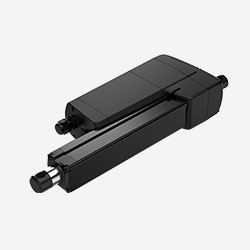 |
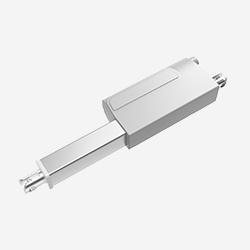 |
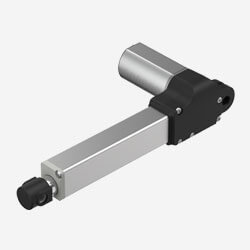 |
TL18AC |
TL31K |
TL52 |
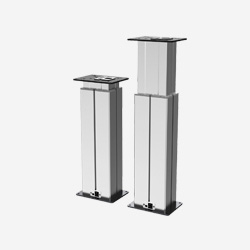 |
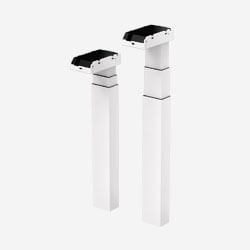 |
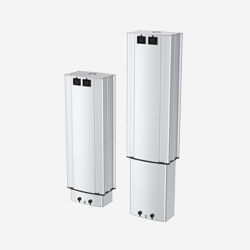 |
Each type of these actuators is essential to their appropriate application, but as mentioned before, significant advances in the manufacturing world have allowed for these motion devices to be interchangeable. Each has its advantages and disadvantages, so be sure to weigh the options before deciding on the right actuator for your project.
Advantages And Drawbacks Of Pneumatic, Hydraulic, And Electric Linear Actuators
|
Characteristics |
Pneumatic |
Hydraulic |
Electric |
|
Complexity |
Simple system composition |
Moderately complex system composition |
Control systems and motion components can work together in multiple complex configurations |
|
Peak Power |
High |
Very high |
High |
|
Control |
Simple valves |
User must |
Flexibility of motion control capabilities with electronic controller |
|
Position Accuracy |
Very difficult to achieve position accuracy |
Mid-stroke positioning requires additional components and user support |
Positioning capabilities and velocity control allow for synchronization |
|
Speed |
Very high |
Moderate |
Moderate |
|
Load Ratings |
High |
Very high |
Can be high depending on the speed and positioning desired |
|
Lifetime |
Moderate |
Long |
Long |
|
Acceleration |
Very high |
Very high |
Moderate |
|
Shock Loads |
Able to handle shock loads |
Explosion-proof, shock-proof, and spark-proof |
Limited ability to handle shock loads |
|
Environmental |
High noise levels |
Hydraulic fluid leaks and disposal |
Minimal |
|
Utilities |
Compressor. power, pipes |
Pump, power, pipes |
Power only option |
|
Efficiency |
Low |
Low |
High |
|
Reliability |
Excellent |
Good |
Good |
|
Maintenance
|
High user-maintenance |
High user-maintenance |
Little to no maintenance |
|
Purchase Cost |
Low
|
High
|
High
|
|
Operating Cost |
Moderate |
High |
Low |
|
Maintenance Cost |
Low |
High |
Low |
Although advances in the manufacturing world have come quite a long way, there are still specific applications in which electric lift cylinders cannot compete with the load ratings, force, or speed necessary. Some environments are unsuitable for electric actuation and have a maximum velocity that cannot be exceeded. Although it is rare, electric actuators can overheat if there are extreme changes in the duty cycle or used outside of their warranty.
Shock loads on an electromechanical actuator affect its lead screw or bearing, resulting in the possibility of it affecting the entire system’s performance. Some electric actuators can have difficulty holding a locked position or have issues with backlash, usually dependent on the screw pitch. Although the electric motion system's initial cost may be more expensive than other actuators, the whole operation's increased efficiency coupled with the little to no maintenance required over its life span makes the total cost lower than different types of actuators.
Summary
Each actuator type exhibits both good and bad characteristics that one must weigh when determining their application project's best solution. By deciding what features are non-negotiable from the start, you will begin to rule out particular actuators based on these needs. Suppose it comes down to two specific actuators, both able to do the necessary job efficiently. In that case, you may want to consider the entire cost of the system: this includes the initial investment, maintenance, and repair fees, as well as the cost of potential risks you could take with each motion component system.
It is also essential to choose the right company to purchase your product for optimum results. TiMOTION is an industry-leading provider of electric linear actuators, capitalizing on a global team specializing in innovative solutions to manufacture the best products for industrial, furniture, medical, and ergo markets worldwide. We understand that the right technology can solve nearly any problem and that drop-in replacement, customizable electric linear actuators are used increasingly in applications that have outgrown pneumatics and hydraulics. TiMOTION strives to provide the highest quality, customizable components at competitive pricing. For more information, visit us online today at TiMOTION.
|
Further reading: |
|
|
→ |
|
|
→ |
|
|
→ |
Part 3: Electric Linear Actuators With Integrated Safety Option |
|
→ |
|
|
→ |
Part 5: Dustproof And Waterproof Linear Actuator's IP Rating |
|
→ |
|
|
→ |
|
|
→ |
|










